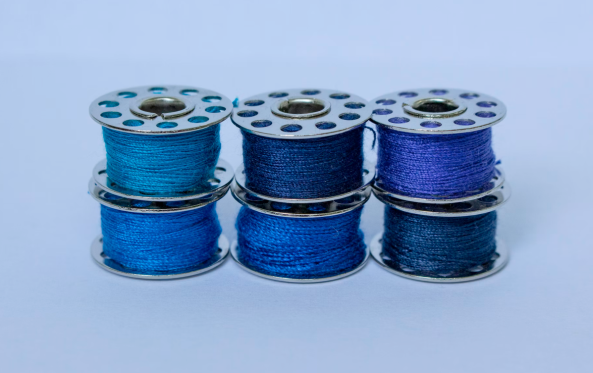
13th edition of Refashion Innovation Challenge
Refashion's Innovation Challenge is back for its 13th edition! Find out more about the call for R&D projects and how to apply!

Refashion's Innovation Challenge is back for its 13th edition! Find out more about the call for R&D projects and how to apply!

Pour la 2ème édition de son appel à projets annuel dédié au réemploi, Refashion soutient 35 projets en France métropolitaine et à La Réunion.|Pour la 2ème édition de son appel à projets annuel dédié au réemploi, Refashion soutient 35 projets en France métropolitaine et à La Réunion.
Project Developers: Purchasing / Quality Partners: Suppliers

The ennobling stage gives new properties to the product thanks to processes such as dyeing, finishing, printing or coating.
To transform the appearance and the properties of the textile, this stage calls on numerous chemical products and can consume a large quantity of water. It can also impact on the health of personnel involved in manufacturing. As an example, the bleaching process via the sanding technique is banned by numerous brands as it is harmful to the health of workers assigned to this task - it provokes silicosis, an uncurable and deadly disease.
Furthermore, the Detox campaign initiated by Greenpeace in 2011 and relayed by the ZDHC initiative has committed brands to greater transparency and the drastic reduction in toxic chemical product discharges in their production and supply chain.
Today new, more respectful production processes for man and the environment are being developed and should be preferred by brands in order to reduce their environmental footprints.
Complexity of implementation
Estimated economic gain
Human means
Implementation timeframes
Try it! : Follow the sheet step by step and have a go!
It is firstly necessary to carry out a rapid assessment of your material purchases. What proportion of materials are purchased directly or selected? For unspecified materials (i.e. when the company buys finished products), what is the proportion of known material suppliers? If the company has a low level of visibility with respect to its material suppliers (and their ennobling sites which may be all or partly externalised), traceability is necessary for the 20/80 of its purchases (Pareto).
If the company knows the ennobling sites for at least 50% of its purchases, it can complete its assessment with a profile of the main sites: what is the proportion of sites located outside of the EU (where regulations can be less strict making the risk of pollution higher) and among them, how many are equipped with wastewater treatment plants (WWTP)? Which sites possess environmental guarantees (i.e. certification, recent audits or any other concrete environmental protection initiative?
Guaranteeing the safety of materials is an essential stage. Europe, the United States and several Asian countries have developed restrictive regulations aiming to ensure the absence of hazardous substances in textiles and footwear (e.g.: REACH, Prop 65). Depending on their origin or the treatments carried out (e.g. coating), certain materials can be particularly exposed to these regulations. It is essential to put in place a monitoring system, to draft eco-toxic specifications (Restricted Substance List - RSL) duly validated by material suppliers and to carry out an adequate number of self-checks (or to base yourself on certifications such as Oeko-tex).
Depending on the strategy and maturity of the company, defining a strategy to reduce the environmental impacts associated, with material ennobling requires going beyond regulatory obligations at the level of objectives and working lines. Initially, it can consist in making traceability systematic at the level of material suppliers or ennobling sites and gaining visibility regarding their practices.
Various working lines can be envisaged such as focusing on the processes that the organisation wants to improve as a priority, fixing strategic performance objectives for material suppliers (See Tool 1) or environmental pre-requisites for new incomings (See Tool 2).
The company may establish its own standards: management of chemical products, limits to be respected, water management policy...(See Tool 1). In this case, it may also develop its own check means, namely via the introduction of environmental audits. Generally conducted by independent experts, these visits enable the compliance of sites with local regulations to be assessed as well as the solidity of the site's environmental management system (EMS) (See Tool 3).
Use reference certifications such as the ISO 14001 (the most frequent), EMAS, STeP. Bluesign is also recommended. These constitute credible guarantees which will exempt you from other forms of checks on site at this stage.
The most advanced companies can take environmental performance management one step further with a more active management of the chemical products used by ennobling sites to limit local pollution. The organisation can namely take inspiration from MRSL lists (Manufacturing Restricted Substances List) and initiatives such as the ZDHC programme (See Tool 4). This commitment will also contribute towards reinforcing regulatory compliance with mechanisms such as REACH. Share standards with suppliers and integrate these specifications into check systems to ensure that standards are respected (signature of specifications, request for certificates, audits).
The most ambitious stakeholders can follow an innovation logic by choosing innovative ennobling processes (closed loop or processes using less chemical products) … (See Cheat Sheet: Dyeing and finishing processes).
Réaliser des tests qualités poussés sur les échantillons afin de s’assurer que le produit correspond aux exigences du cahier des charges (solidité des teintures à la lumière, au lavage, à la sueur par exemple) et que la durabilité du produit n’est pas remise en cause. Intégrer les procédés d'ennoblissement retenus dans les fiches produits et/ou dans les cahiers des charges.
Les acteurs les plus ambitieux pourront s’inscrire dans une logique d’innovation en choisissant des procédés d'ennoblissement innovants (en boucle fermée ou utilisant moins de produits chimiques) … (Cf. Anti-sèche : Les procédés de teinture et d'apprêts).
% of products which are the focus of REACH certificates signed by suppliers
Proportion of products which are the focus of eco-toxic self-checks
% of products / purchases from "eco-responsible" ennobling sites
Existence of an MRSL aligned with the ZDHC
The aesthetics of the product is essential. Innovative ennobling process must offer a finish which is comparable to that of conventional processes in order not to impact on product desirability.
Tool 1 : Environmental standards for the supply chain - GSCP Environmental Reference
Tool 2 : Selection of ennobling sites - NRDC
Tool 3 : Assessment and development of supplier environmental performance -GSCP Environmental Implementation Guidelines

More local, more sustainable circular production

A strategy guided by traceability and organic materials

Products that are Eco-designed and Made in France